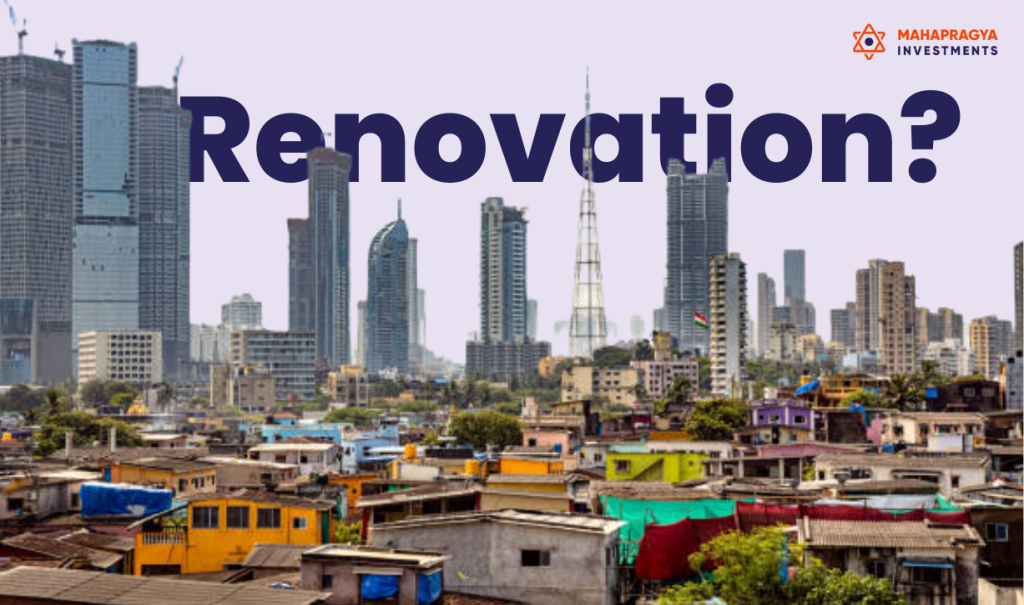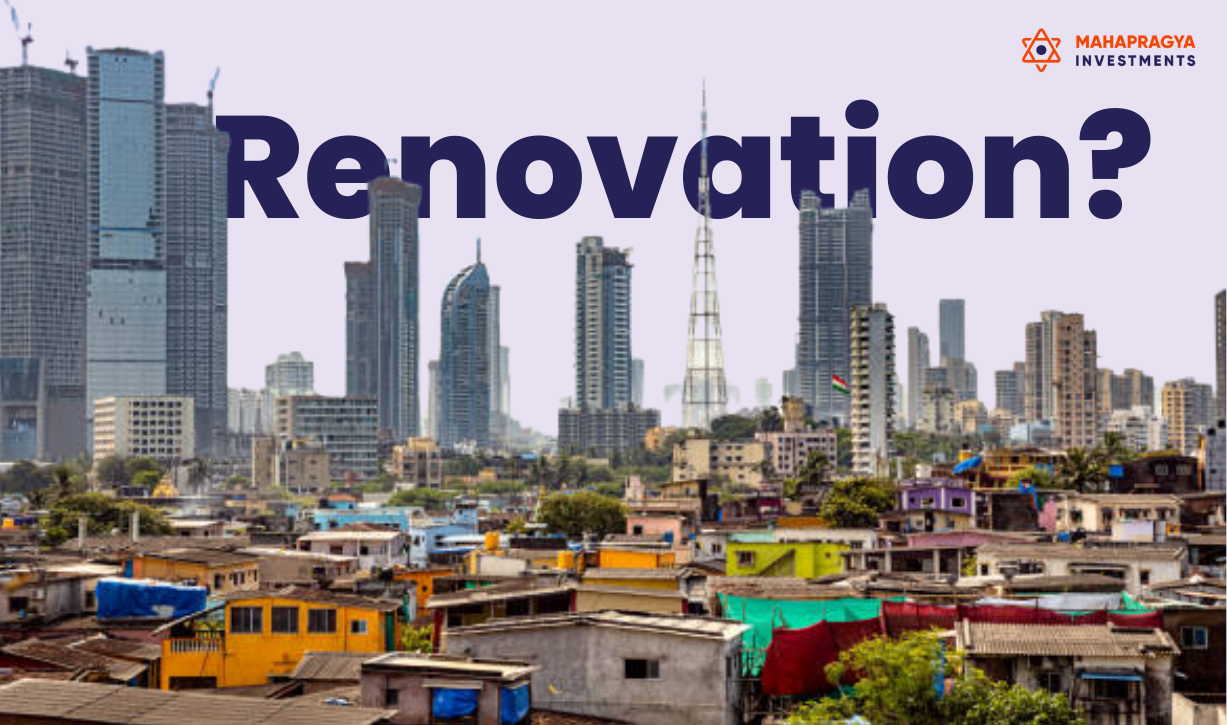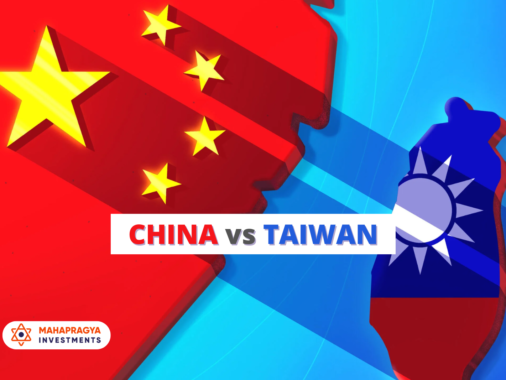
The most populous slum in the world. One million people lived in 100,000 decrepit dwellings. Eighty individuals share a single toilet. And a slum occupying an area of approximately 300 football fields.
Dharavi.
Where literacy rates reach 69 percent. A locale where business and entrepreneurship thrive. A region in which the informal economy contributes over $1 billion to India’s GDP.
Dharavi is what you’d call a problem.
This may be the case for a bit longer.
Because Mumbai is fed up with the slum, Dharavi will be demolished shortly. In the following seventeen years, the slum will undoubtedly be replaced by multistory structures, glitzy shopping malls, and glass office buildings. Its inhabitants will receive new housing.
Wait…what?
Yeah. This is part of an ambitious Slum Rehabilitation Housing (SRH) initiative from the 1990s! And the Adani group will be in charge of the 20,000 billion rebuilding project.
But to comprehend what is occurring, we must first understand how a slum of such epic proportions arose in India’s financial metropolis.
Dharavi was only sometimes located in the heart of Mumbai. Because Mumbai (Bombay) was different in the past. Under the British East India Company, most of Bombay’s urban expansion occurred in its southern region. Dharavi, meanwhile, was situated on the northernmost point and was home to a Koli fishing village. As the population swelled in the late 1800s, the British Raj evacuated local populations and polluted enterprises to Dharavi. As people began restoring the marshy regions, the original inhabitants left to make way for a new inflow of people, primarily those employed in tanneries and cotton mills. Employment opportunities rose. Migrants from the countryside continued to migrate to Dharavi. Squatters cohabitated with the original leaseholders. And the slum started to take form. Therefore, the inhabitants were left to fend for themselves because the British did not reinvest the spoils of their pillage to improve the local infrastructure. No administrative support. No planning. Without investment.
Even as the city redrew its bounds to meet its fast growth, Dharavi stayed in its original location. Midway through the 1990s, Dharavi was sandwiched between an international financial sector and an airport.
Clearly, the administration did not approve of these developments. They disliked the slums and the fact that the residents here resided on government land. But they could not simply demolish everything and leave people homeless.
They needed to locate the center ground. In 1995, the Government of Maharashtra established a committee and posed the question, “What can be done about the slums?”
The committee reviewed the issue and determined that “in-situ” rehabilitation would be implemented. The plan was to have a private builder assume control of the slum. They would construct multistory apartments and ask inhabitants to relocate, so releasing land and releasing excellent real estate.
It was an obvious choice!
In 1995, the Maharashtra government established the Slum Redevelopment Authority (SRA).
Dharavi might be incorporated into the plan if 70 percent of the slum dwellers agreed. But advancement was gradual. In 2007, the government issued an RFP to which 101 companies responded, but nothing came of it. Legal difficulties were insurmountable. There was opposition from the residents as well. In 2009, the Brihanmumbai Municipal Corporation (BMC) performed a survey and discovered that just 37% of Dharavi’s residents could provide proof that they had lived there for the required duration. Only those qualified for new housing under the rehabilitation scheme. The rest were not. People feared they might lose their only home. Even a state-appointed team of specialists referred to the idea as a “sophisticated land grab.” They advised the administration to cease focusing on revenues and instead care for the residents of Dharavi.
And when things finally got underway in 2019, when a developer from the UAE won the bid, the government announced, “We neglected to include railway land. We must start the bidding process over again.” A change in government led to the cancellation of the bid.
Thus, Dharavi did not undergo a makeover. And nobody believed it would ever occur. Up to now… It appears that Adani will be the one to finally start things moving.
On the surface, the new project appears to be a good concept. People will be able to escape these confined living conditions. They will have a home of their own. It is upward mobility that each Indian desires.
However, there are still issues that need to be resolved. The head of the Dharavi Redevelopment Committee asserts, and we quote, “According to our state’s Slum Act, any redevelopment requires people’s participation. In our case, we weren’t given a chance.” He claims that no one in Dharavi understands what kind of houses and amenities to expect. They do not even know if they will receive housing in the neighborhood. Remember that these are Dharavi business owners. And 80 percent of inhabitants work in Dharavi. People are concerned about the effects this will have on their lives.
But there’s something else no one discusses: Does Slum Rehabilitation Housing (SRH) actually improve the quality of life?
Well, it’s not really simple after all.
What do we suggest?
When Dr. Ronita Bardhan, a Fellow at the University of Cambridge, surveyed 1,244 SRH households in Mumbai, she discovered that many spent 40% of their income on power. Because the number of homes with air conditioning has increased dramatically. You are mistaken if you believe it is the residents’ responsibility to purchase air conditioners in Mumbai. Not quite so fast! The researcher installed temperature sensors within the homes and discovered that the interiors were 10 degrees Celsius warmer than the exteriors. The residents were required to purchase air conditioners.
And that is not all. In the slums, communal cooking takes place in open areas. However, they now cooked independently in their own homes. Their increased fuel usage consumes a substantial portion of their income.
Moreover, there is the issue of health.
Regarding these structures, the majority of developers accomplish the bare minimum. They are not selling real estate. They are rehabilitating, but rehabilitation is not where the money is. Thus, the majority of apartments lack adequate ventilation. And when you cook indoors, the particles remain within the home for an extended length of time. Approximately 2.5 hours. And this can have negative consequences.
In addition, several of these SRHs receive no sunshine. In addition, they have become breeding grounds for tuberculosis, a condition India hopes to eradicate by 2025.
Even mental health incurs costs. For example, researchers at the International Institute for Population Studies (IIPS) discovered that sixty percent of Mumbai residents living in SRHs reported feeling lonely. In urban slums, this figure was only 17%. You can assume that social networks and tight-knit groups are crucial components of these slums.
So buying an apartment in a multistory building isn’t as desirable as it’s made out to be. The people may have some cause for concern about their future.
We can only pray that the residents of Dharavi do not suffer the same fate for the time being. We hope that redevelopment will not deprive them of their lives and means of support. And we hope that it does not also destroy its thriving $1 billion economy.
Progress is positive. But perhaps it will be done in an inclusive manner.






